Here's how to roast or bake a whole squash or pumpkin the easy way — without cutting it up first!
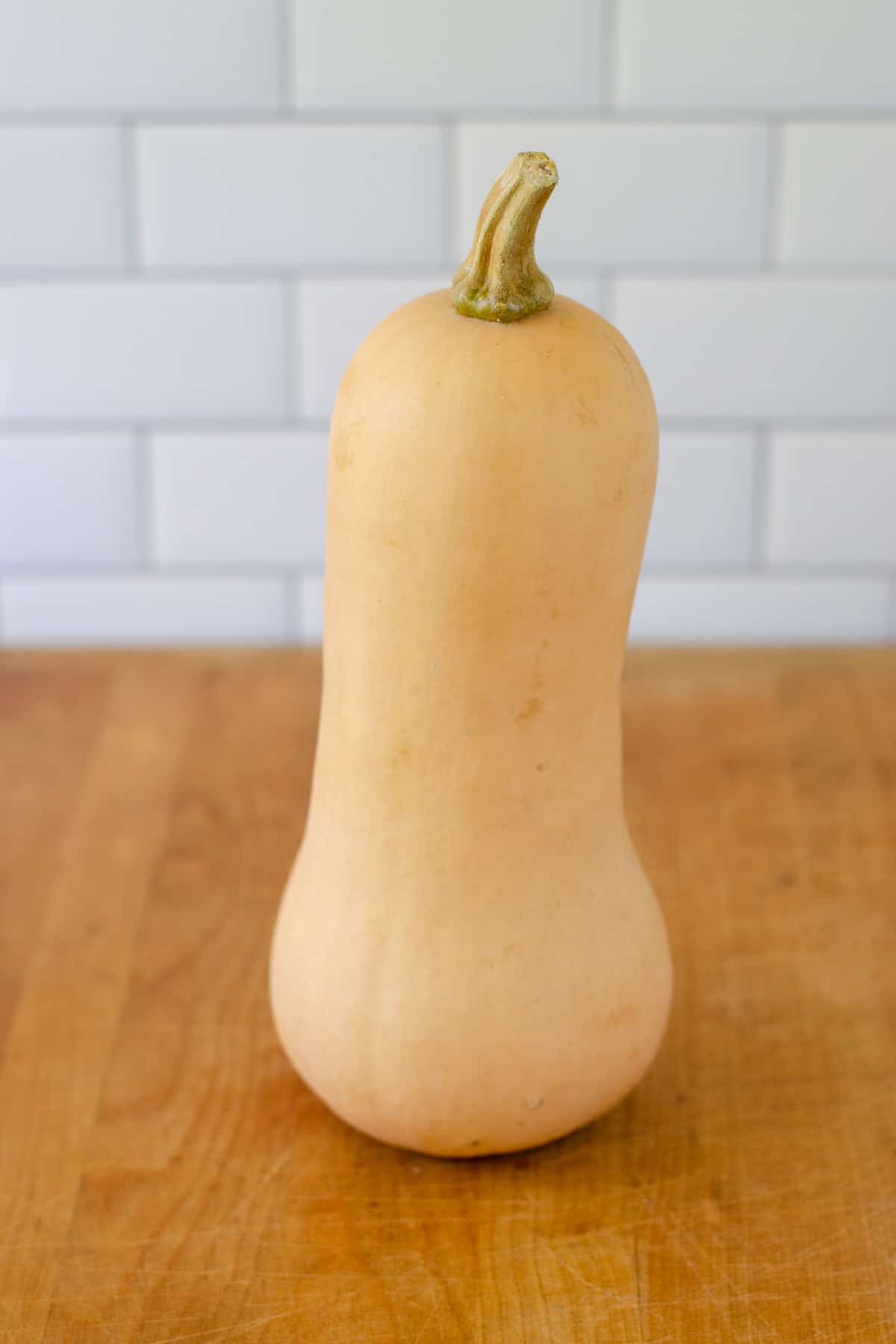
Want to Save This Recipe?
Enter your email & I'll send it to your inbox. Plus, get great new recipes from me every week!
Roasting is one of my favorite ways to cook just about anything — vegetables, chicken, shrimp, even fruit. It's hard to beat the caramelization and depth of flavor you get from roasting. It's a great cooking technique.
When you roast something, it pretty much cooks itself so there is very little hands-on time. And you get a lot of flavor from the food without having to add a lot of extra ingredients. Most things need only a quick toss in olive oil, salt and pepper. Or if you can roast it whole in its skin, you really don't need to add anything to it.
This is the easiest way to roast a whole squash or pumpkin. Wash the squash, stab it a few times to make steam holes and put it in the oven until it's soft. That's it. No wrestling with the squash to cut through the tough skin, no peeling, no chopping.
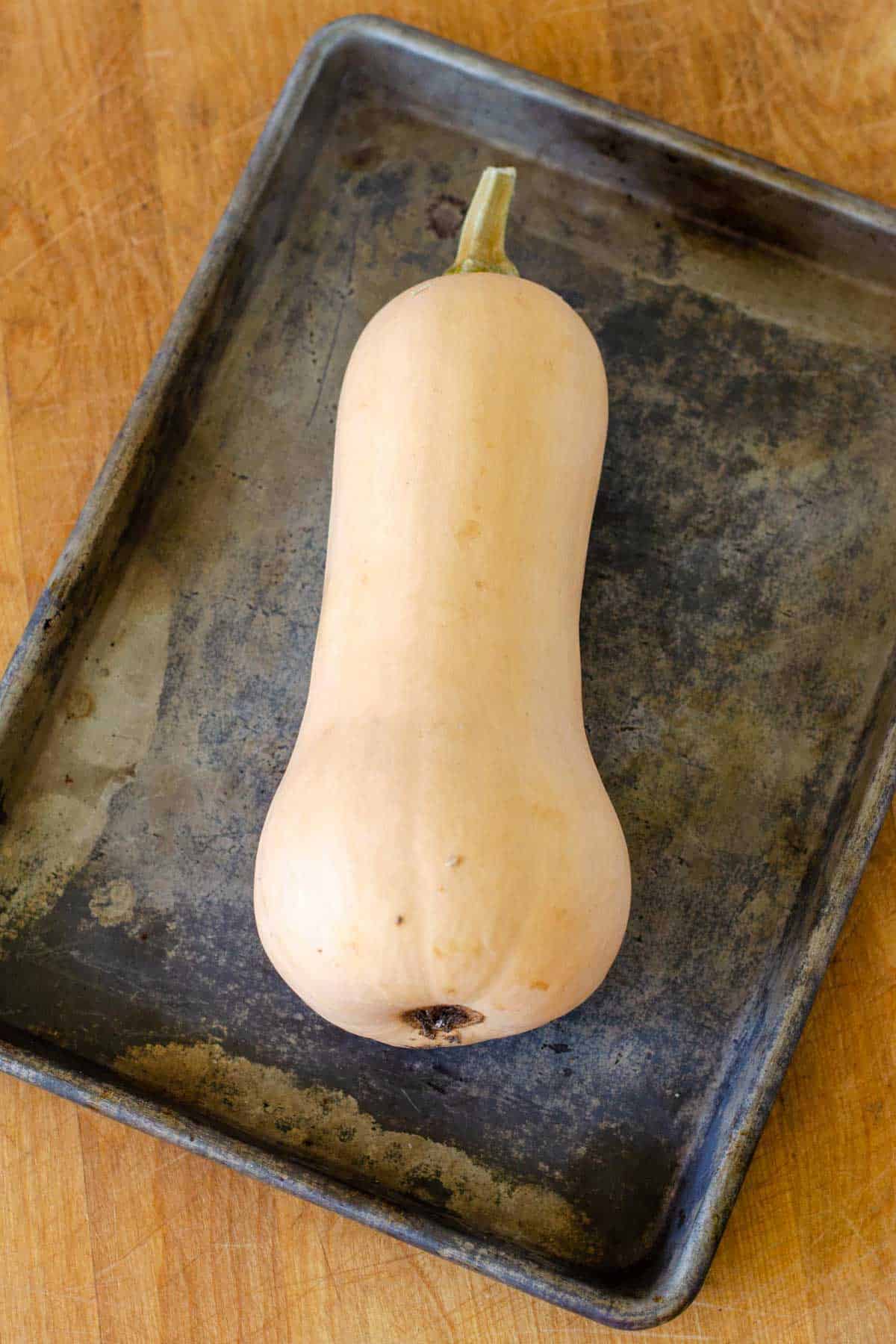
Once it's roasted, it will cut open like butter. Scoop the seeds out with a spoon and peel the skin off with your fingers (make sure you let it cool first so you don't burn your hands).
I use this method whenever the squash will be mashed or pureed. The flesh can be used right away, or frozen until needed. I usually freeze the pureed squash in one cup portions for easy use in recipes like soup, pie and breads.
I also use this method to roast spaghetti squash. Once it's roasted, cut it around the equator and scoop out the seeds. Use a fork to separate the spaghetti squash "noodles" in each half.
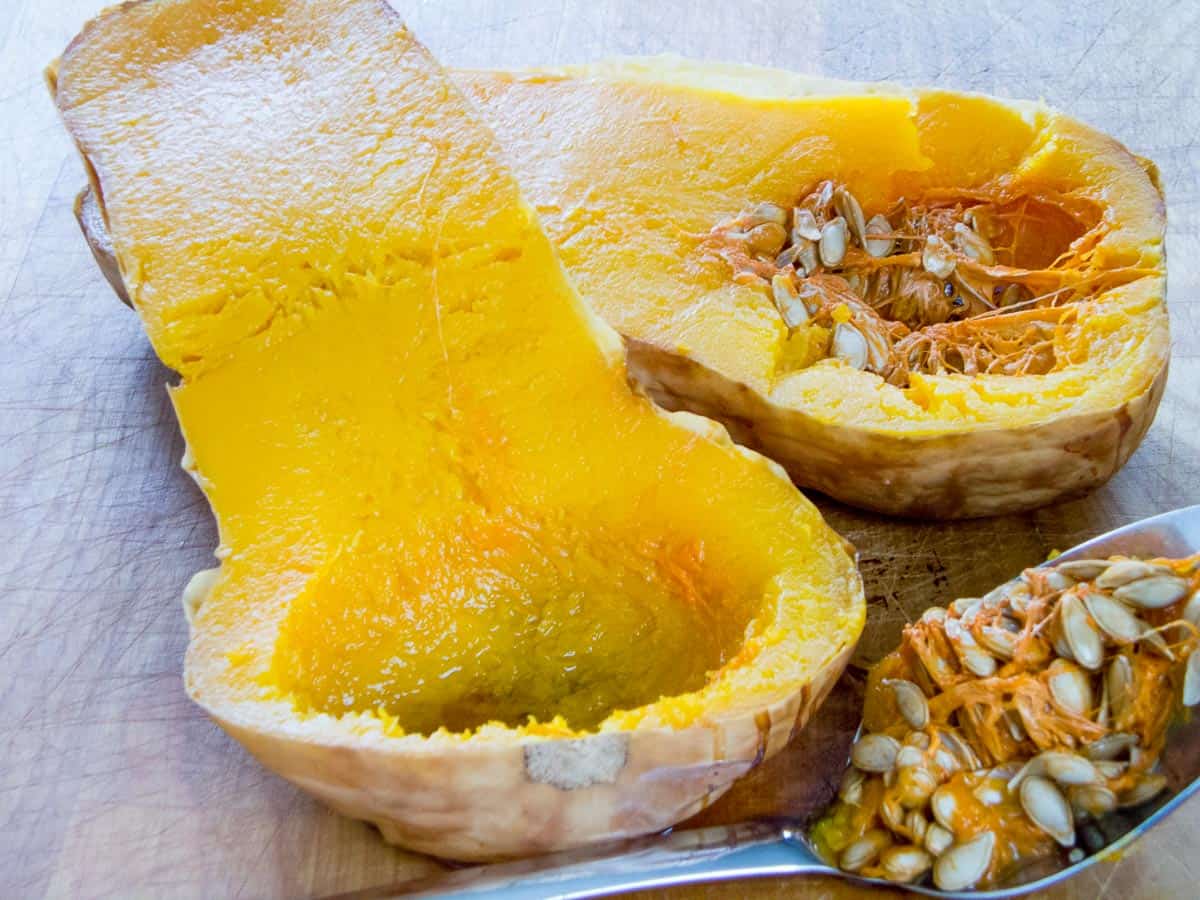
Why Roasting Whole Is The Best Method
Roasting a butternut squash whole is, quite literally, a no-prep way to cook a tasty winter squash with zero cooking or complicated knife or utensil skills needed.
Here's why roasting it whole makes sense:
- It saves time and effort.
- It reduces the likelihood of knife-related kitchen accidents.
- It's the perfect method for any size squash. So go ahead and purchase that extra large butternut squash knowing that you don't need to cut it beforehand and can cook it with ease.
- It makes meal prep easy. Roast more than one at a time so you can scoop the flesh when cooled and store it for later use.
Here's what you won't need to do:
- There is no peeling needed, so you don't need to wield a large knife or try to use a vegetable peeler on that tough outer skin.
- You also don't need to try to evenly cut the squash lengthwise, which is nearly impossible with a very large butternut. It's practically a two-person job. And honestly, there's no need to do it.
- You don't need to de-seed it and cut it into chunks before roasting, which is time-consuming and messy.
All you need is a baking dish or sheet pan, the squash and a knife to pierce the skin a few times before sliding it into the oven. What could be easier?
Can Other Squash Be Roasted Whole?
Absolutely!. This roast-it-whole method can apply to the following hearty winter squash varieties:
Pumpkins
Spaghetti Squash
Delicata Squash
Acorn Squash
The same rules apply:
- Wash or clean the outer skin.
- Pierce it a few times with a sharp knife.
- Place in a baking dish or on a sheet pan lined with aluminum foil or parchment paper and roast until tender.
The skin will peel off easily, or at the very least, you can slice through it and de-seed and scoop out the soft flesh with a spoon, or a fork, in the case of spaghetti squash.
Do I Need To Peel The Outer Skin After It's Roasted?
The short answer is no. The skin is actually edible. You can leave the skin on, scoop out the seeds and continue scooping the cooked butternut flesh out for use in your recipe(s).
However, you may want to peel the outer skin off for two reasons.
- You'll get that lovely and tasty caramelization from where the skin meets the flesh. It's part of what makes roasting the squash whole a great way to take advantage of an easy flavor perk.
- By removing the skin, you save yourself the trouble of scooping because it's all right there, easily accessible.
How Can I Make Butternut Cubes With This Method?
If you have a recipe that calls for cubed butternut or you want to add it to other dishes in cubed form, simply undercook the butternut squash just a bit. If you've already tried this roasting method, you'll have a better idea of when to remove the squash from the oven based on prior experience. This will depend on its size, too. Ideally, the flesh should be somewhat soft so that you can slice into the butternut squash with ease in order to cut it into smaller cubes.
How To Serve Butternut Squash
I have quite a few ways to use the flesh of butternut squash, such as soups, pies and bread, but using this method is also an easy way to cook the flesh, split open the squash, de-seed it and season the two halves and serve as is.
To do this, I like to season the cooked and de-seeded halves with just a drizzle of olive oil and maple syrup plus a dash of ground cinnamon.
Adding apples and onions can make it a sweet and savory side dish, too. Just add chunks of apple and onion to the sheet pan, or use a small baking dish, during the last 20 minutes of roasting the squash. Give them a drizzle of olive oil, maple syrup and dash of cinnamon.
Here are a few other ideas on how to serve cooked butternut squash.
- Frittata: Using cubed cooked butternut squash (see my method above for roasting whole but undercooking just a bit in order to make cubes) in this easy sausage and butternut squash frittata recipe. It pairs beautifully with a mix of fresh herbs included in this easy skillet recipe.
- Herbed Side Dish: You can also use cubed butternut squash in this simple garlic and herb side dish. Just toss the undercooked cubed butternut squash on a baking sheet along with garlic and fresh rosemary to a quick session in the oven. You'll love this roasted butternut squash recipe that uses a luscious duck fat (or bacon fat) to amp up the flavor.
- Soup: The cooked squash flesh is absolutely perfect for use in soup. My soup recipe is a delicious way to spice up this ingredient in a myriad of ways, all while making it rich and thick and keeping dairy-free and gluten-free. Add a little roasted onion and zesty spices for a savory soup that's a cinch to make.
- Pie: Roasted butternut puree makes a great substitute for pumpkin pie, too! The taste and texture work perfectly for this dessert. Use it like you would pumpkin puree in my paleo pumpkin pie recipe. Of course, if you're a purist and want pumpkin, consider making your own pumpkin puree using the exact same whole roasting method outlined here. So easy and you'll have leftovers for all your favorite seasonal recipes.
- Bread: Don't forget bread making with pumpkin or butternut puree! A warm slice would be perfect with my pumpkin spice coconut latte.
- Casserole: Roasted butternut squash makes a naturally sweet but lower carb substitute for roasted sweet potatoes. Try this swap in my sweet potato casserole as a healthy side dish for the holidays.
How To Store Cooked Squash
If you're not using the cooked squash immediately, but are storing it for later meals, it's best to freeze it. Scoop out and discard the seeds and then scoop out the flesh and let it cool before packaging.
My recommendation is to store it in one cup portions. This makes it easy to calculate for use in soups, breads and pies.
For the fridge, it will keep up to five days in an airtight container.
For the freezer, it will keep up to 3 months in a freezer-safe and airtight containers.
More easy squash recipes
- Crock Pot Butternut Squash
- Roasted Butternut Squash with Garlic and Rosemary
- Sausage and Butternut Squash Frittata
- Smoked Maple Butternut Squash
- How To Cook Butternut Squash In Instant Pot
- Instant Pot Spaghetti Squash
- Roasted Butternut Squash Soup
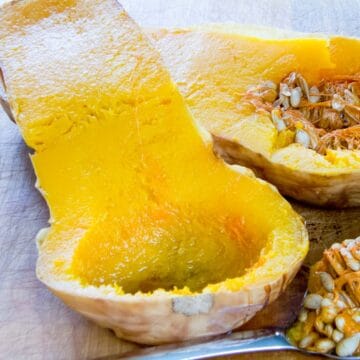
How to Roast a Whole Squash or Pumpkin
Ingredients
- 1 whole butternut squash or pumpkin
Instructions
- Set oven to 375 degrees.
- Wash squash, cut a few deep slits to release steam and place squash in baking dish.
- Roast squash until soft and easily pierced, 1 to 1-½ hours depending on size of squash.
- Cut squash open and allow to cool until cool enough to handle, then remove seeds and peel.


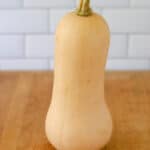
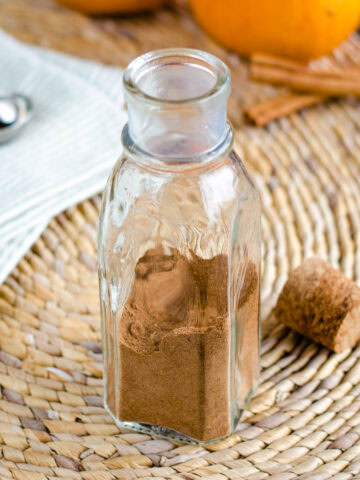

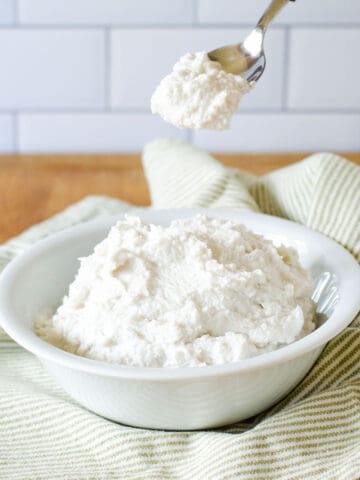
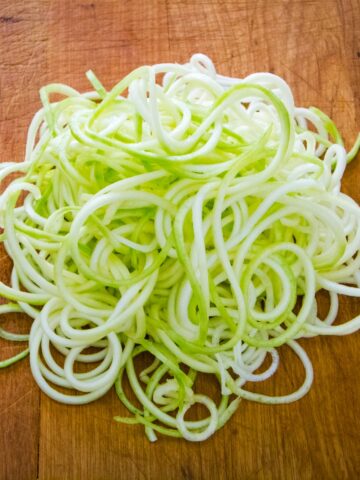
Carolyn
I love roasted squash. Usually I remove the seeds and soak them and then roast them separately for a snack. Roasting them right in the squash would be easier. When you cook them this way, are they still edible?
Love your blog. You have lots of great recipes! Thank you.
Lisa
Hi Carolyn – great question. I haven't tried drying the seeds after roasting the squash. Let me know if you experiment with this.
Glad you like the blog – thanks for visiting!
mekkiec
I love roasting my winter squashes! I usually cut mine first, them lay them face down on some tin foil before putting them in the oven. It makes it a little more difficult to cut, but when I do my pumpkins this way, the skin peels right off!
Alina
Great idea! Thank you Lisa.
How much longer does it take to cook this way as opposed to cutting the squash/pumpkin in half?
Thank you.
Lisa
Hi Alina, that really depends on the size of your squash. You really just want to cook it until it's soft. It may take a little longer but it's worth not having to struggle with the knife 🙂
Andrés
Hello, how are you? This is an awesome post.
I have a question: I've seen many recepies with spaghetti squash and many different types of sauces; nevertheless, here in Venezuela, spaghetti squash it's not a very common type of squash. Can I do this recepy with a regular pumpkin (I don't know if that is the name, but here is very common, the big orange ones)?
If I can, does it have some specific requirements for cooking it?
Thanks a lot.
Lisa
This recipe should work with most types of winter squash but you may need to adjust the cooking time.
GG
Big help. Have issues due to broken wrist//hand
Sharon Seiber
For me too as I have gout in my thumb joint and going down into my joint in my wrist. I had several butternut that were given to me and wondered how I was going to manage! Thank you so much!